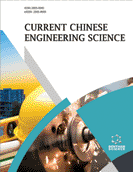Abstract
The proper design of the UAV will enable the system to meet its service and
functional requirements. It will also promote its availability and reliability, thereby
extending its useful life in service. This work focuses on the development, sizing of an
engine, and simulation of an Unmanned Aerial Vehicle (UAV), including the assembly
of the whole propulsion system in the UAV. The mission of the developed UAV is for
short range (25-100 km). The propulsion system consists of the following: the engine,
muffler, electronic ignition system, fuel tank, engine servos, propeller, firewall, and
battery. These components assembled together give the UAV its required thrust for
flight. The design calculations were done, and simulations for the design were carried
out using Solid Works and AutoCAD. The developed UAV was constructed using local
materials such as Styrofoam and wood. It was driven by a two stroke internal
combustion engine (gas engine) and an electric motor controlled by an electric speed
controller (ESC). The performance evaluation of the developed UAV was carried out
using the virtual X-Plane flight simulator. The results obtained indicated that that the
developed UAV can be deployed for the short-range missions. This work provides
design data for the development of the UAV. Hence, it is envisaged that the outcome of
the study will be of immense guide to industries, which specialize in the development
of UAV.
Keywords: Engine sizing, Propulsion system, Simulation, UAV






















